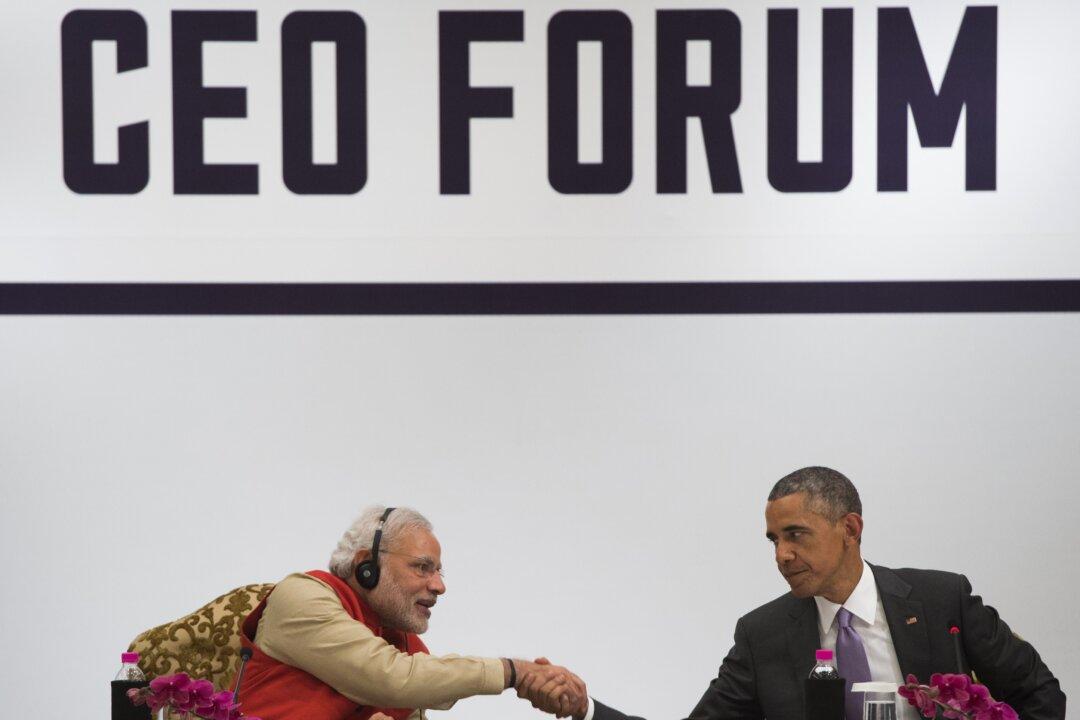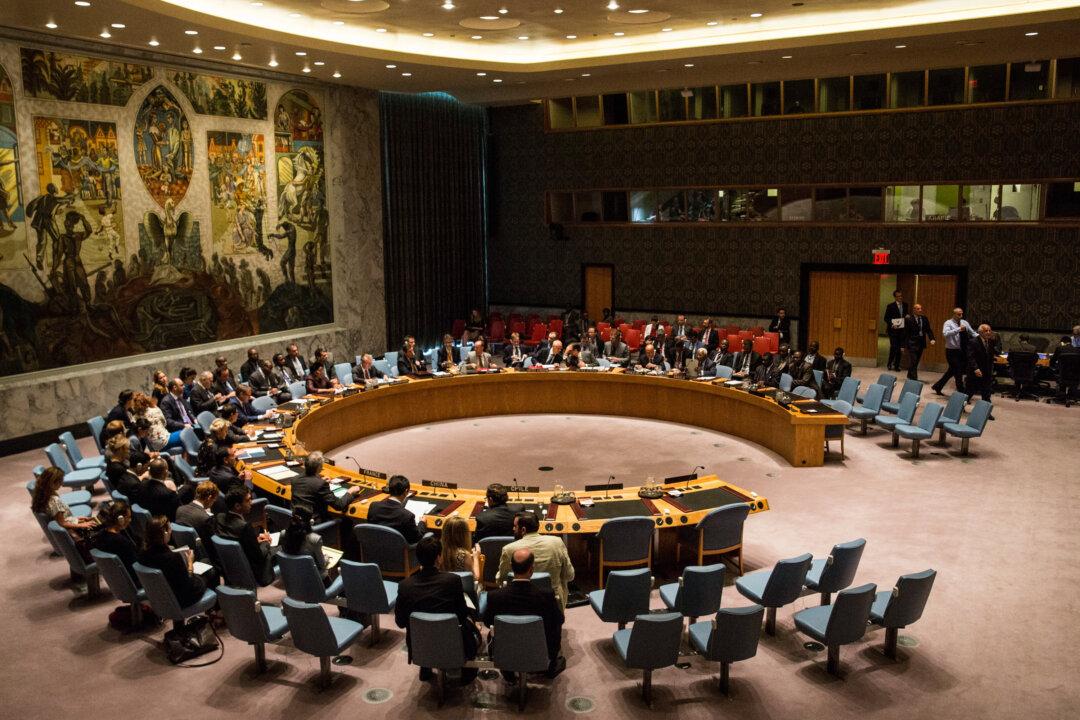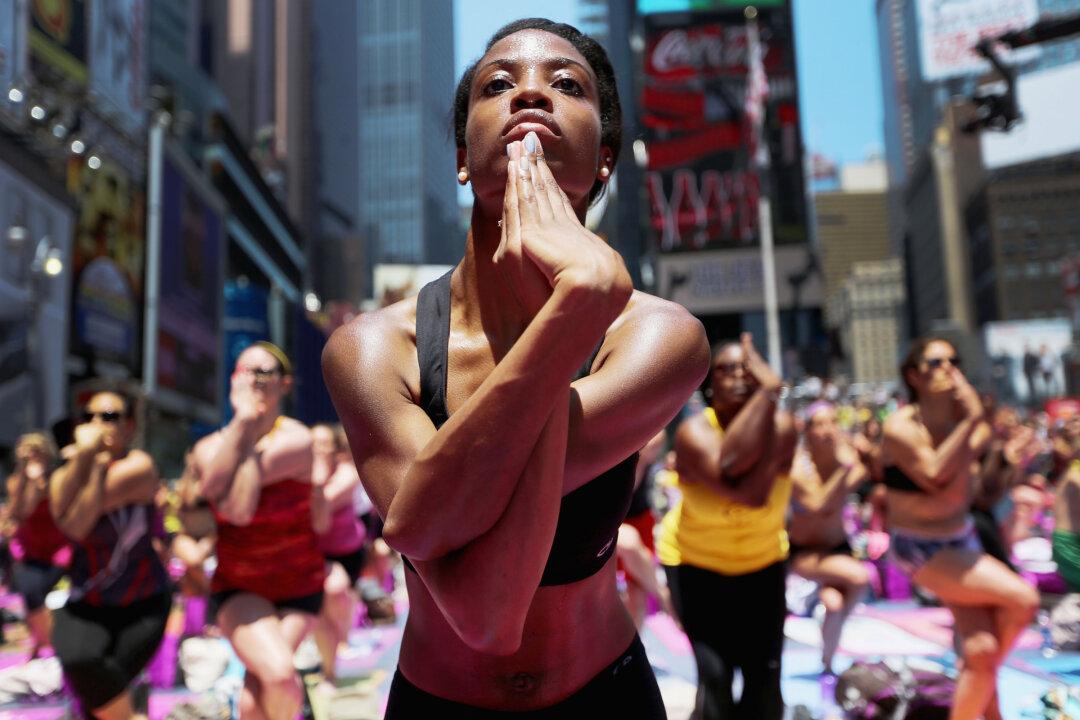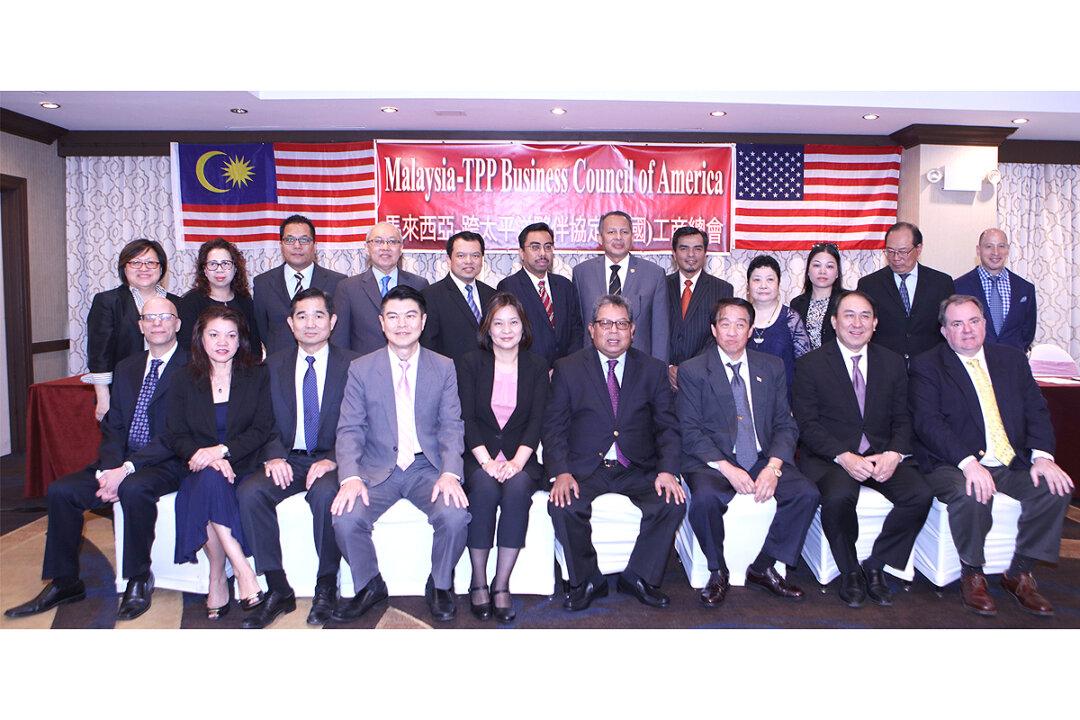India celebrates its Republic Day each year on Jan. 26 with pomp and pageantry. But this year’s celebrations assumed a special significance with the high-profile presence of U.S. President Barack Obama, who was the chief guest at the event. Indian Prime Minister Narendra Modi, while visiting Washington in September 2014, pulled off a coup of sorts when he succeeded in inviting Obama to the Republic Day celebrations.
It was the first time that a U.S. president was the chief guest at India’s Republic Day celebrations; also, this was the second time that a sitting U.S. president visited India. The symbolism notwithstanding, the visit was not short on substance.
Both sides have consolidated their relationship after Modi’s U.S. visit. Putting the all-time low in relations behind them—the nadir point was achieved after the unsavory episode over Devyani Khobragade, an Indian diplomat posted in New York, who was strip-searched and arrested by New York’s police on charges of what is known in U.S. legalese as human-trafficking, creating outrage in India—both sides swept away the mess with the diplomatic broom and vowed to forge a close strategic partnership between them.
New U.S. Ambassador in India
The appointment of the new U.S. ambassador to India, Richard Rahul Verma, who arrived with strong bipartisan support in Washington, has been welcomed by India’s political and media circles, not only because of his Indian origin, but also because of what Indians call his “constructive role” in hammering out the 2005 U.S.–India deal on civil nuclear cooperation.
Obama and Modi also resolved issues in a long-stalled nuclear deal that for years kept U.S. nuclear power companies from doing business in India. The new nuclear deal signed between the two sides during Obama’s visit, breaking the deadlock that had stalled a civilian nuclear power agreement for years, was one of the most significant results of the visit.
India and the United States renewed the 10-year defense framework, adding the Defense, Trade, and Technology Initiative (DTTI) as its new element, permitting the development and joint production of four low-level defense products. Furthermore, both sides will jointly develop new aircraft technologies and jet engines.
India urged the United States to use its levers to crack down on what it said is Pakistan-sponsored terrorism. Washington wields considerable leverage on Pakistan, which has become dependent on U.S. aid and will be hurt without it. Secretary of State John Kerry, who visited Pakistan at almost the same time that Obama visited India, told the Pakistanis to stop terrorist activities from their soil aimed against any country. This was, clearly, a message to the Pakistanis that the United States would not tolerate any terrorism against any country, including India.
Terrorism, particularly emanating from Pakistan, was discussed at great length during the Obama visit. The recent release of the 2008 Mumbai massacre plot suspect Zaki-ur-Rahman Lakhvi, who was rearrested by Pakistani authorities on a far less severe charge of abduction, has caused consternation in India. Pakistan, the Indians said, has also been providing support to the Lashkar-e-Taiba leader Hafeez Saeed, for whose arrest the United States has announced a reward of $10 million. But Hafeez Saeed continues to move around freely in Pakistan and is known to have support from the Pakistani military establishment.
Washington would like New Delhi to play a “constructive role” in post-withdrawal Afghanistan. Both Washington and New Delhi want to ensure that the Taliban does not stage a comeback in that country.
Economic Ties
As expected, economic issues dominated the Obama-Modi talks. The United States wants India to continue with its economic liberalization process and further open its economy by cutting down tariffs and freeing the economy from the socialist baggage it has carried for much of the time since its independence in 1947.
U.S.–India trade has surged fivefold since the turn of the century and is chugging toward the $100 billion goal.
Many American business leaders, with a penchant for the hyperbole, use the “sky’s-the-limit” metaphor to describe the incredible potential inherent in trade. The coming years will show if President Obama’s vision of bilateral trade crossing the $500 billion mark is a realistic goal.
Obama prodded Modi to open up the services sector, particularly transportation, finance, and retail, in addition to addressing copyright, taxation, and other issues.
Besides Obama’s expressive support for India’s candidacy as a permanent member of the United Nations Security Council, Washington supports India’s membership in the Asia Pacific Economic Cooperation (APEC) as well as the Trans-Pacific Partnership (TPP)—a move that should unleash the dynamics for greater trade and business between the two countries.
The joint declaration released at the end of Obama’s visit states that the U.S. president welcomes India’s interest in joining the APEC, which, without India, the Asian giant, appears incomplete. Washington is expected to quietly campaign among other APEC members for India’s membership before its annual summit in November.
The United States would also consider supporting India’s entry into the Trans Pacific Partnership, which has 11 potential Asia-Pacific countries as potential members representing nearly 40 percent of the world’s total GDP. India is not one of the potential member countries, but this is expected to change in the future.
India’s present $2 trillion economy is expected to grow and make it the world’s third-largest economy by 2025, according to economic pundits in the United States.
The China Factor
China’s reaction to the Obama–Modi chemistry—images of the Obama–Modi bear hugs went viral—was baffling for many pundits: China issued a statement downplaying the visit’s significance, calling it “superficial.” China’s remarks betray its insecurity and concerns over its declining supremacy in the region. Indeed, China’s image as an economic powerhouse and an attractive investment ground for foreign investors is becoming dented as it faces economic and strategic challenges slowing down its growth.
Economic experts said that China’s economy is shrinking. The country’s meteoric economic rise may have already peaked; future growth rates should be around 4 percent, a far cry from the near double-digit growth of previous years. China also has a heavy debt overhang and a real estate bubble; it is losing its competitive edge because of its old industrial structure unlike the U.S.’s modern information economy. India’s economic growth on the other hand, is predicted to surpass that of China by 2016, according to the International Monetary Fund.
While China will continue to be an interesting economic partner, its clout in the global arena could be curtailed. Also, China faces a host of problems, implicit in the recent protests in Hong Kong, reflecting the tenuousness of China’s draconian control over its people, and possibly of political upheaval to come. China also has deep-rooted historical problems with its neighbors, particularly Japan. China’s strong-fisted show of strength in the East and South China Seas can only push its neighbors to form alliances to thwart any potential Chinese adventurism in the region.
Manik Mehta is a New York/New Jersey-based journalist who has been covering global economics, business, and social–cultural issues for more than 20 years




